Complete Guide to Agile Vision Statement + Examples

Are you having problems creating a compelling agile product vision statement for your organization? The process becomes simple when you have the required knowledge and skill.
Every successful business organization, including the best IT companies globally, creates a clear vision of who their target audience is and what problems their products solve. The result? Your product practically sells itself and has the potential to become a household name.
This article shows you how to create a compelling agile product vision statement that is crucial for building an agile culture in an organization.
Let's get started.
What is an Agile Product Vision Statement?
Have you ever wondered about the primary motive behind creating certain products? You are not alone in this. The answer you need is locked in the definition of the agile product vision statement.
An agile product vision statement offers clear insight into reasons a product exists, its target customers, and what distinguishes it from other products.
The product vision statement is a compelling elevator pitch designed to bring a correlation between the product goal and the organization’s strategy.
This statement gives an organization’s development team a drive to develop a product, while the team members get a reason to combine their efforts.
An Example of a Product Vision Statement

Every agile product vision statement answers these vital questions.
- What is the product?
- Who is the target audience of the product?
- What is the goal and business value of the product?
- Why does the target audience need the product?
- What value will the product offer its target audience?
- What unique features distinguish the product from its competitors?
An Agile product vision statement is the guiding light and backbone of any product development process. This statement says nothing about achieving the product vision.
You have to implement the product strategy to achieve your product vision. Creating an online vision board can help your team create clear and achievable goals and stay focused and motivated while trying to achieve the set vision.
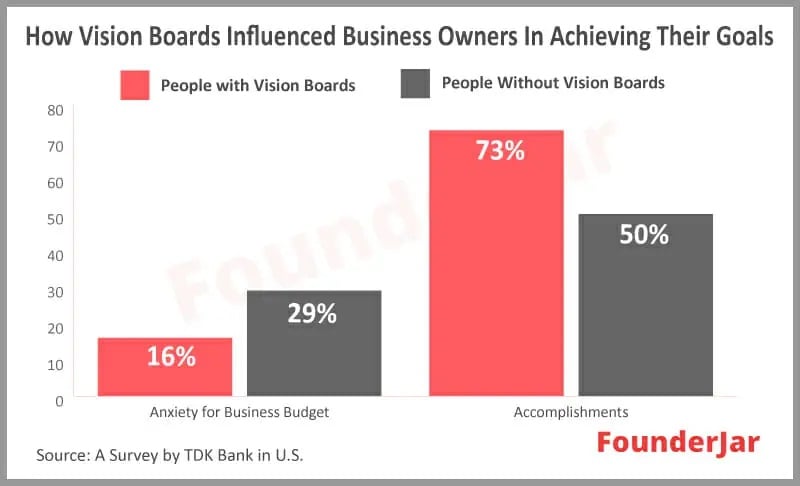
What Makes an Effective Agile Product Vision
There are facts you must consider if you want your company’s agile product vision to give you your money’s worth.
Before you write a compelling vision statement, establish your product benefits to your organization, the general public, and your business model and revenue streams.
Let's look at some of these factors and how they affect the product vision.
- Customer-Centered: Your agile product vision must not deviate from being focused on the needs of your target audience. Ensure you identify and suggest ways to meet the unique needs of your target market in your statement. Without a product vision that's customer focused, you will not get the desired results.
- Motivational: You will achieve more results if your vision statement has inspiring segments about the product. Your product vision must include reasons you start working on the product and its beneficiaries. In addition, the vision statement must be compelling enough to get the key stakeholders and executives to support you.
- Directional: An agile vision statement serves as a guiding light for major decisions about the product. Once the vision is clear to the agile teams involved, everyone can begin moving in the right direction and making interwoven decisions toward achieving the overall goal.
- Short and Sweet: A key element of every effective vision statement is its brief nature. Go for a brief statement that you can summarize in one sentence. You don't require charts, graphs, or intricacies to communicate your ideas and vision.
- Attainable: While crafting your vision statement, set attainable goals and objectives. If your vision statement is not achievable, you will lack the full support of your team.

How to Create a Compelling Agile Product Vision Statement
Creating a compelling agile product vision statement offers various benefits for your business. This process takes effort and time.
But if you have the right tools, you can master the technique in a jiffy. Many free mission and vision statement generators can help you develop hundreds of good vision statement ideas within seconds.
The product owner plays a major role in defining the scope of the product vision statement. An agile product vision board will go a long way in simplifying the process. It offers a structure for your team's brainstorming activities.
Your vision statement is a reference point for the development team, scrum master, scrum team, and stakeholders while executing the project.
Let's follow these steps in creating a compelling agile product vision statement.
Step 1: Understand and Communicate the Product Objective
There are certain key elements that you need to consider before communicating your product objectives.
- Target Customer: You must consider who your target customers are and how your product meets their critical needs. This understanding brings a new perspective to your vision statement. Pay attention to details about your product and craft your statement to prioritize your customer's needs.
- Key Product Goals: Your company must have a purpose for creating every product. Identify the reasons and state them clearly in the product vision. The goals must include certain company strategies that the product supports and how the product and its new features benefit the public and the company.
- Competitors: Does your product have features that make it unique among similar products? Your answer must be in the vision statement. Highlight what makes your product different from others and why your target customer would prefer your product above similar products in the market.
Step 2: Create a Draft Agile Vision Statement
This first draft must contain vital facts about your product, like its value, quality, maintenance needs, and longevity.
A compelling vision statement explores the future state of your product by shedding light on what it will look like in its completed state. Ensure you use a brief statement that displays the future of the product.
Pro Tip: Your sentences must be in the present tense as though the product already exists and affects its consumers.
Step 3: Validating and Revising the Agile Vision Statement
Drafting your vision statement is just one side of the coin to validate the process by running it through various tests.
Here are some of the vital questions you must run your draft through.
- Is the vision statement designed for an internal audience with clear and focused content?
- Does the vision statement deliver value consistent with corporate strategies and goals?
- How explicitly does your statement cover the customer's needs and requirements?
- Does the vision statement portray the best possible outcome?
- Are the business objectives specific and achievable?
- How compelling is the vision statement?
Your review of the questions will determine if your vision statement is standard and if you can process it.
After validating your vision statement, you have to run it through key stakeholders in the organization.
- Project Stakeholders: Their job is to scrutinize the vision statement and see if it aligns with everything the product stands for and can accomplish. Furthermore, its content should focus on achieving the overall project goal.
- Development Team: Your development team is responsible for creating the product. Their understanding of the vision statement is essential for producing quality products that match your vision statement.
- Scrum Master: With a clear understanding of the vision statement, a scrum master knows what’s required to clear out every roadblock and ensure the development team journeys on the right path.
- Agile Mentor: Since the agile mentor is free from the bureaucracy of your organization and other constraints, you can acquire a clear and unbiased perspective. This external voice can help to launch your product into a new dimension regarding quality.
Step 4: Finalizing Your Agile Vision Statement
At this stage, your agile vision statement must have gone through different forms of review to arrive at a state of perfection.
Ensure your vision statement is visible to everyone, especially the scrum team, to ensure they remain on the right track through the project lifecycle.
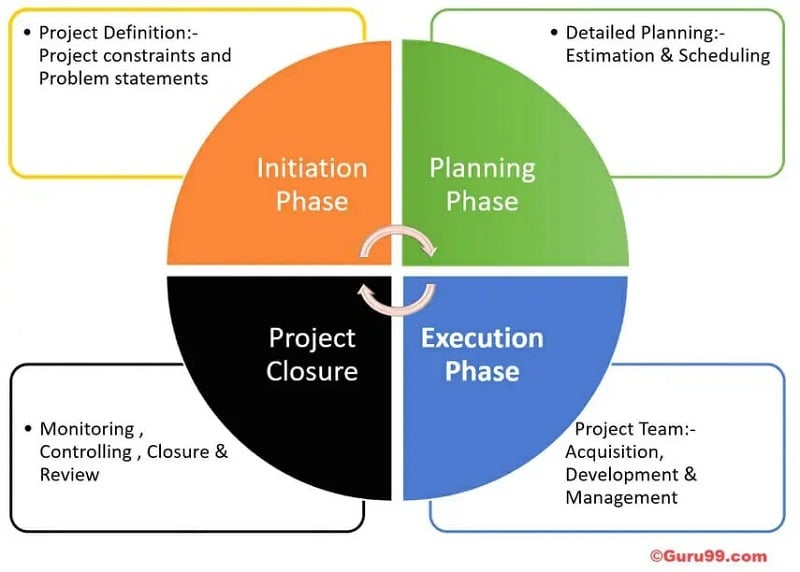
Every year, review your vision statements because various factors may have influenced their credibility. Compare the statement with the present marketplace conditions and check for any changes in the company's needs.
If you follow these steps diligently, you will have a well-structured and compelling vision statement that benefits your company and customers.
10 Guiding Principles for an Agile Vision
Here are the ten guiding principles for an effective agile vision.
1. Teams
You can have more than one team working on a particular product vision statement as long as they work in unison. Your team must consist of skilled and qualified individuals who have mastered their craft and can deliver independently of challenges.
Before you assemble your team, ensure you sniff around thoroughly to select the best of the best. Your agile team must know how to optimize and simplify various processes to meet the requirements and needs.
Three vital roles determine the success of your team’s activities.
- Product Owner: This individual is responsible for structuring business activities and requirements in the right order of priority.
- Technical Owner: The major decision maker regarding vital technology and architectural moves that affect the vision statement.
- Agile Leader (or Scrum Master): This individual helps the team navigate agile process challenges and obstacles.
Your team's activities influence the authenticity of your agile vision statement. The more in sync they are, the better for you and your organization.
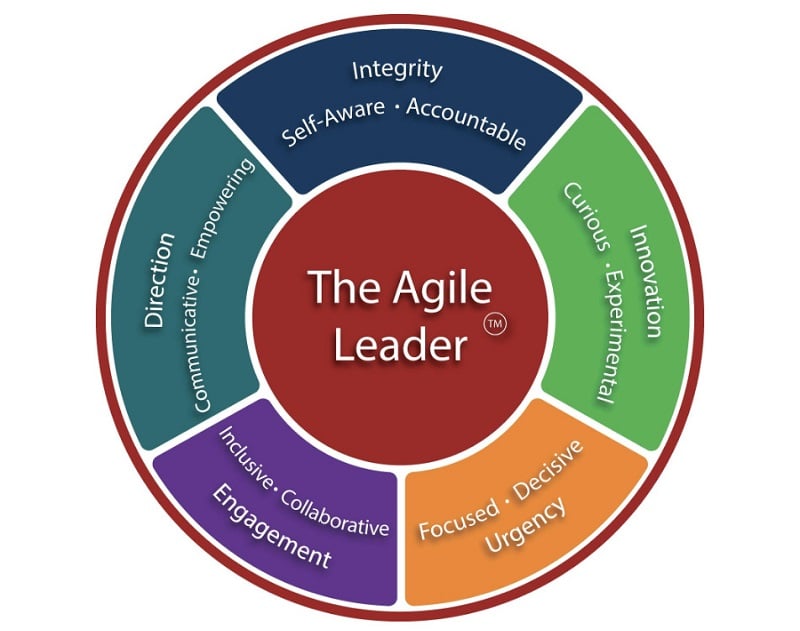
2. Delivery
You can use agile sprints to condition your team to deliver on time and forget the worries about the late execution of your vision statement.
Your organization strategy should promote automation of all testing and development processes to provide customer-driven value and stay on course. Ensure your vision statement drives the team to strive for excellence regarding delivery.

3. Empiricism
You must ensure that your vision statement is fully business-value driven, with insightful customer feedback cycles as a guide.
Your vision statement must emphasize that only relevant features and products require development. Conduct research to confirm the trends and build your product around them.
Do not add features that no one wants. The result of such action will be a loss to your business and product backlog.

4. Mindset
You must understand the agile manifesto and everything it stands for. For effective product management, you require a vast knowledge of scrum and kanban skills resulting in relevant agile practices.
In addition, reorganize that you are in a changing world where even your business model is subject to changes. A simple solution is to constantly update your skills and make necessary adjustments to your vision statement.
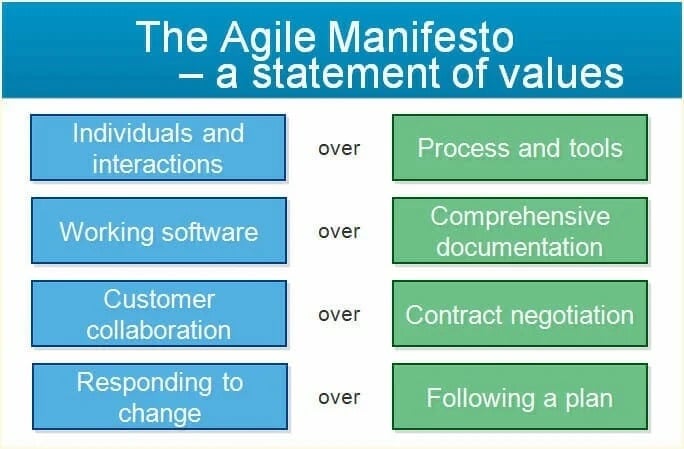
5. Minimalism
You can do more with less. Putting in much effort in agile development does not guarantee results. Approve the resources required to execute the organizational strategy toward accomplishing your product goals.
Working with teams may be a little difficult regarding managing resources. But with a well-structured vision, you will carve out solutions that get everyone satisfied.
6. Collaboration
The agile approach strives for healthy collaboration among teams working towards a sprint goal.
Ensure your teams are working in sync with one another. Make the vision statement clear and compelling enough for every affected party to move in the same direction.
If you want to create a successful product, every hand must be on deck, striving toward the overall business goal.
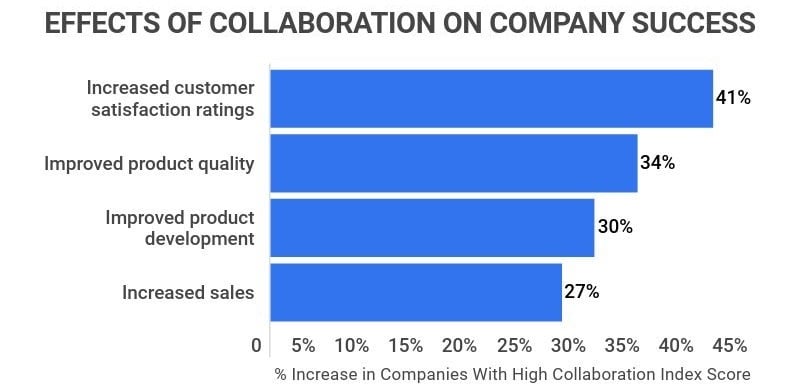
7. Mission
Ensure your product does not deviate from your business value strategy, portfolio priorities, and financial goals.
Having your executive team on board during the process will go a long way in creating the perfect vision statement. You can gain more insight and knowledge through your communication with them and use it to guide your way through.
Remain focused on your mission and don't get carried away by pressure or popular demands.
8. Improvement
You must seek to enhance how your teams and departments execute your agile vision. Ensure your agile vision statement is enjoyable during execution.
If you want to create a successful product, you must seek to improve your skills and the content of your vision statement. Review your vision statement to ensure the content is still relevant.
9. Trust
Trust is a two-way process. If you don't trust your colleagues, they won't trust you. Organize trust tests and teach your teams and departments the value of trust and reliance on each other. If any form of grievance arises, ensure you settle it quickly before it affects the effectiveness of each team member.
10. Learning
Learning is vital to the success of every organization. Teach your teams the importance of increasing knowledge. If you want to build a strong agile community, learning is part of its building blocks.
Failure is never the end when you are implementing your vision statement. See every mistake and drawback as a stepping stone to a greater accomplishment.
For example, you can assign a new leader to manage some aspects of the product life cycle. If they do not perform optimally, you can still work around their mistakes and get your desired result.
Ensure you emphasize the importance of learning and how it benefits the organization. Additionally, your teams can increase their knowledge base via individual study, pairing, and team knowledge sharing.
The more knowledgeable your team is, the more effective they will be when executing your product vision statement. Prioritize constant learning.
You can encourage them to enroll for agile project management certifications like the PMI Agile Certified Practitioner (PMI-ACP) by the Project Management Institute and the PRINCE2 Agile Project Management Certification by Prince2.
Put Your Agile Vision to the Test
After learning how to frame your agile vision and product statement, get your team ready to go on this great adventure with you. Bear in mind that you cannot rush the process.
Use reliable agile product visioning board templates and other tools like product vision canvas to guide you in creating flawless vision statements.
Use your product vision statements to navigate your downstream activities like product roadmap planning, sprint planning, and agile personas planning.
In addition, constantly review your product vision statement and ensure you and your team have a shared understanding of how to achieve it.
Explore Further
- 18 Best Free & Paid Agile Project Management Software
- Agile Roadmaps: Roadmapping Process & Examples
- What Does an Agile Coach Do (+ Benefits of Agile Coaching)
- Beginner’s Guide to Agile Scrum Ceremonies and Artifacts
- The 9 Key Benefits of Using the Agile Methodology
- Top 16 Most Important Agile Metrics That Define Your Success